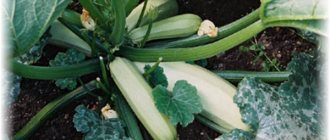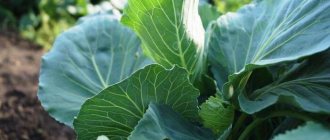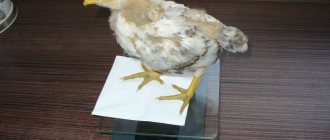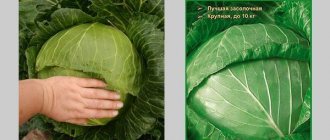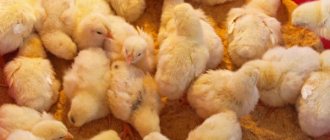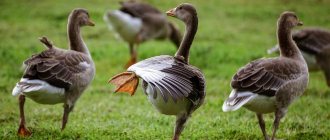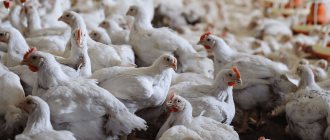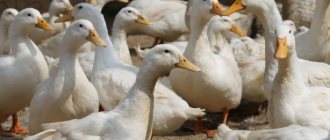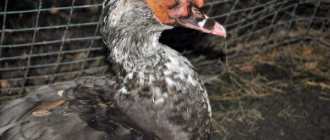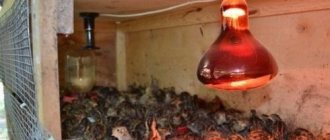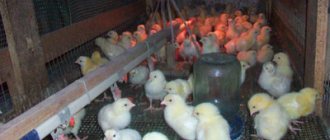Beijing cabbage description
Other names: petsai, cabbage, Chinese cabbage - one of the varieties of turnips, belongs to the herbaceous plants of the Cruciferous family. It was first mentioned in the early 5th century AD. The first cultivation began in China, then the culture spread to Japan.
In these countries, the tender vegetable was actively cultivated, resulting in the emergence of many different varieties. Culture appeared in Europe in the mid-18th century. Japanese breeders have developed an early ripening variety called Petsai, which is characterized by high yield.
Over the last decade, petsai have also been cultivated at Russian latitudes. On any store counter you can find a fresh product that has gained popularity among many housewives. Petsai is suitable for consumption raw; it can also be boiled, pickled, or stewed. The leaves have a mild taste and are particularly juicy. The vegetable is extremely healthy and has a rich composition of nutritional components.
In terms of the amount of protein and vitamin C it contains, Peking cabbage is ahead of lettuce and even white cabbage. Due to its ability to improve water-salt balance, strengthen the walls of blood vessels and the heart muscle, it turns out to be an excellent component in the diet.
Informative! The usefulness of the product in the presence of diseases such as stomach ulcers or gastritis has been proven.
Summer sowing of Chinese cabbage - why?
Firstly, let's figure out why plant pekinka in the summer? This is worth doing in cases where you do not consume all vegetables immediately after ripening, but like to pamper your home with winter supplies.
The fact is that only those heads of Chinese cabbage that grew from seeds sown in July - early August are suitable for winter storage. Not all cabbage is suitable for fresh wintering - early and mid-season varieties do not last even until December. For pickling and especially winter storage, mid-late and late-ripening varieties are suitable, as well as those whose seed packaging is marked “for storage.”
Question two: why is it necessary to plant Chinese cabbage in the summer only in July and August, why is June not suitable? The exact timing of sowing of Pekinka is determined by its extremely high sensitivity to light (length of daylight hours). The bolting of this crop occurs when there is excess light (daylight hours lasting more than 12 hours), which is precisely what is observed in early and mid-summer. Therefore, it is better to sow Chinese cabbage either at the end of April or at the end of July. In this case, the growth and development of plants will occur during periods with relatively short daylight hours, and the plant will direct all its nutrition to the formation of heads of cabbage rather than peduncles.
That is, Chinese cabbage planted in the second half of summer will be stored at least until winter. Therefore, it makes sense for lovers of this vegetable to plant it twice: the first harvest will immediately go into salads, the second – for storage.
Peking cabbage growing features
Traditionally, the vegetable is grown as an annual. In the climate of Russia, cultivation is available both in greenhouses and in the open. When cultivating a plant, it is important to take into account certain characteristics of the variety:
- Being resistant to low temperatures, the grains are capable of sprouting at temperatures slightly above zero degrees.
- The most favorable temperature for crop development is considered to be 15-20 degrees; in the hot dry season, the yield drops sharply.
- The salad variety prefers sufficient lighting, well-moistened soil, cool weather, and irrigation of the foliage.
- Too much daylight hours provokes premature flowering of the plant, which does not lead to the formation of inflorescences, but to the ripening of seeds.
Under favorable conditions, over the course of a couple of months the plant forms a head of cabbage with a rosette of foliage up to 60 cm in length, which more closely resembles a salad than a type of cabbage.
Summer-autumn period
The result of such cultivation of Chinese cabbage during this period has a favorable effect not only on quantity, but also on quality. In this case, only direct sowing into the ground is used, which is done after July 20. The heads of cabbage are collected at the end of September - it is important to do so before the autumn frosts.
Chinese cabbage is an early ripening storehouse of nutrients
Growing using the ridge method is the most important condition in this case. Planting on the ridges is done 1-2cm deep.
In this case, hilling is excluded, and while weeding the rows, it is forbidden to rake the soil to the plants in any way.
Beijing cabbage types and varieties
Despite the conditional precocity, all varieties of the variety are divided into early (ripening period 7-8 weeks), medium (8-9 weeks), late (9-12 weeks).
Popular early varieties are:
- Stonefly is a leafy variety, ripens a little longer than a month, and is resistant to flowering.
- Sprinkin is a hybrid variety, ripening time up to 60 days, elongated forks of a juicy green hue.
- Asten - a Dutch variety bred specifically for cultivation in open ground conditions, the ripening period is 50-55 days, the inflorescences reach a weight of 1-1.5 kg, and have a dark green tint.
- Lenok - intended for cultivation in closed conditions, excellent salad appearance, producing inflorescences weighing up to 300 grams.
Know! Any variety of crop will develop better and faster if the beds are darkened during strong solar activity.
The number of varieties of the mid-season group exceeds the number of early and late species. The most popular mid-season species:
- Vorozheya is a semi-headed species, has sweeping flat foliage, elliptical in shape;
- Glass - ripens within 70 days, forks have a typical size, weight up to 2 kg, internal foliage has a yellowish tint;
- Rollnik is a representative of a species resistant to cold and shade, the heads of cabbage are green-yellow in color, weighing about 200 g;
- Autumn beauty - ripening period is up to 85 days, the heads of cabbage are of medium density, weigh about 2-2.5 kg, slightly open at the top.
There are quite a few late varieties, because the crop is still early ripening. The most popular types are:
- Russian size - cold-resistant species weighing up to 4 kg, delicate yellow shade;
- Parking is a hybrid species with special taste characteristics, the heads reach a weight of 1 kg;
- Nika is a varietal hybrid that produces inflorescences weighing up to 3 kg; it is rather poorly stored, but is suitable for pickling.
Growing methods
To obtain an earlier harvest, cabbage is grown in seedlings. You can sow the seeds directly into the ground, but the heads of cabbage will ripen 10-12 days later in this case.
Peking cabbage prefers to grow in sunny, quiet areas with loose, nutritious soil, preferably loamy. In too light soil, seedlings dry out, and when growing in dense, heavy soil, they become infected with clubroot. They fertilize the soil in the fall, supplying the soil with organic matter and minerals. Acidity is not dangerous for Beijing, but salinity leads to oppression of plants. Excessive acidity is diluted with lime, and salinity with sawdust or straw. Since the main product of the oriental vegetable is leaves, the plant requires a lot of nitrogen for their formation. It is recommended to plant the crop after cucumbers, zucchini, onions, tomatoes and legumes, since these are the crops that leave a sufficient amount of nutrition in the soil.
Cabbage from seeds
One of the features of the Chinese plant is its rapid germination. In addition, it is not afraid of cold weather, so cultivation by sowing seeds in open ground is the most optimal for this type of cabbage.
If at the time of sowing the seeds the air is warmed up to 10-13 degrees, then seedlings will appear within 4-5 days. In colder weather, the sprouts will hatch within a week. However, you cannot constantly keep the seedlings in the cold - this will cause them to produce arrows and not edible foliage. Conversely, if it is too hot, the plants will bloom.
Note! Experts recommend using the sowing method for the southern regions, where the soil is already ready for fruitful work in mid-spring. In places with colder climates, it is preferable to grow pekinka through seedlings.
If you want to enjoy Chinese cabbage at the beginning of summer, then you should choose a variety with early ripening. These include Khibinskaya, Asten, Marfa, Mandarin, Lenok, which ripen within 55 days after the appearance of the first shoots.
Seeds are sown in long narrow furrows or small holes if there is no desire to thin out the seedlings later. Since cabbage seeds are very small and can easily fall into soil spores, it is better to compact the bottom of the holes a little with the palm of your hand. The sowing depth should not exceed two centimeters. The seeds are covered with dry soil, then the soil is lightly shed by sprinkling. The top of the soil is dusted with ash or ashes - this will protect the soil from drying out quickly.
The first leaves grow very large and spreading. Taking this into account, the holes should be placed at a distance of at least 30 centimeters from each other. You can immediately place 2-3 seeds in a hole so that you can later determine the best seedling and eliminate the others. To get seedlings as early as possible, the bed with crops must be covered with film.
Advice! Although Chinese cabbage is cold-resistant, it does not tolerate prolonged cold. Therefore, it is better to keep the area with ground crops under cover until mid-May, creating the necessary climate for the plants.
Summer cultivation
To get a harvest in the fall, seeds can be sown in the second half of summer. The conditions for sowing and growing remain the same as for spring cultivation of vegetables. However, during summer cultivation, the daylight hours of the crops will have to be artificially reduced. This can be done using lutrasil. It is also important to maintain the water balance of the soil - you should not allow the soil to dry out often, as usually happens in the summer. In summer, cabbage is supposed to be watered frequently, every other day.
Note! To obtain seeds, Chinese cabbage is planted during short daylight hours. The temperature for vegetable growth in this case is not important.
Seedling method
Many farmers practice the seedling method of growing pekinka - in this case, a fresh product can be obtained much earlier than expected. But this method also has disadvantages: seedlings do not tolerate picking. Although this problem can be avoided by planting the seeds in peat pots, from which replanting is not required. If sowing is carried out in a seedling container, then it is important to take care of the correct soil. The soil mixture should be loose and aerated. For sowing, it is best to make a mixture of humus, turf, river sand, peat and ash. Seeds are placed in the soil at a depth of 1-1.5 centimeters. It is important that the soil is well moistened.
The nursery is placed in a warm and dark place until sprouts appear. With the seedling method, sprouts appear already on the third day after sowing. If you are not sure about the quality of the seeds or you want to speed up the germination process, the seeds can be soaked in a growth stimulator (Epin, Heteroauxin) before sowing. After sowing, the top of the box is covered with film. As soon as white loops appear, the crops are placed on the windowsill so that they are well illuminated by the spring sun. The optimal temperature for full growth of seedlings should be +18 degrees Celsius. To prevent the sprouts from stretching out and sprouting, the air temperature and humidity should always remain within optimal limits.
Note! The seedling method can produce several harvests per year.
After 30 days (by this time the plant will have up to 5 leaves), the seedlings are transplanted into the garden bed. If the weather outside is cool, the seedlings will have to be hardened off. To do this, a week before transplanting cabbage, regularly walk it on the veranda or balcony so that the seedlings get used to the new weather conditions.
Transplantation of seedlings is carried out using the transshipment method, that is, together with an earthen lump on the roots. This will minimize the risk of injury to weak roots. Hardened seedlings take root within 5-7 days. At this time, the soil must be mulched with humus.
The best varieties of Chinese cabbage in terms of yield and endurance
Cha cha. Hybrid representative of early varieties. It can be grown both by seedlings and by seeds. With the seed growing method, the crop ripens within 50 days. By purchasing seedlings, you can reduce this period by 10 days. This variety has excellent taste, which allows you to consume the product in any form, without loss of taste and usefulness.
Lyubasha. The main difference between the species is its amazing taste and individual, recognizable aroma. Belongs to the mid-season group, has a light yellow color. Can be used not only for cooking, but also for decorating dishes.
Beijing Express. A new breeding species with universal characteristics. It can be grown openly, but in greenhouse conditions the yield is higher. The variety is adapted to unpredictable climatic conditions, which allows the variety to be grown in Siberia, the Moscow region, and the Urals. The head of the cabbage contains enough juice, can reach 2 kg in weight, and has a light green tint. The species exhibits resistance to the most common diseases characteristic of the crop.
Pomegranate. Medium early species with heads weighing up to 3 kg. The fruits are very dense, juicy, elongated cylindrical in shape. It has some sweetness to taste, which makes it an excellent option for preparing vegetable salads.
Champion. An early ripening species, producing light green fruits weighing up to 2 kg. It survives well in adverse weather conditions and is immune to infectious diseases.
For your information! In addition to the varieties listed, the varieties Lenno, Nozaki, Asten, Manoko, Marfa, Khibinskaya, and Champion F1 have good reviews.
Harvesting dates and general rules for storing crops
The timing of harvesting Chinese cabbage depends on the specific variety and the time of its planting. Early varieties, as a rule, do not last long. Usually they are immediately eaten in the first half of summer.
Varieties planted in the second half of summer ripen in September. And this autumn harvest must be preserved. To do this, Chinese cabbage is harvested before frost begins. If the heads of cabbage freeze, they will not be preserved. In addition, you should not allow vegetables to overripe. Immediately before harvesting, the heads of cabbage should not be watered; they should remain dry when harvested. For long-term storage, only those vegetables that have a mature and healthy appearance and no damaged or rotten leaves are suitable.
To store in the refrigerator, each head of cabbage is wrapped in cling film or placed in a bag. There is no need to seal it hermetically; air in minimal doses should penetrate under the packaging. Other fruits should not be kept next to Chinese cabbage, especially apples. Condensation that forms over time on the inside of bags or film will lead to a sharp reduction in shelf life. To avoid this, the cabbage is cooled for several hours in advance, before placing it in packaging. Storage is possible without packaging, but then the heads of cabbage will last no more than 10 days, and in some cases less than a week. Freezing cabbage leaves is also allowed. They are distributed into bags and stored in the freezer.
To store them in the cellar, the heads of cabbage are not cut from the garden bed, but rather removed from the ground along with the roots. One recommendation is to place the cabbage in boxes with damp sand, covering the roots. May also be stored in bags. The packages are laid out in boxes.
Growing Chinese cabbage in the country is a feasible task even for an inexperienced gardener. The main thing is to provide the vegetable crop with the required conditions and optimal care.
Chinese cabbage growing from seeds
The main advantage of the seedling method of growing Pekinka is the early harvest. With a little effort in the spring, with the onset of summer you can enjoy the harvest.
Soil requirements
Soil for growing seedlings can be purchased in special stores or prepared with your own hands. When preparing it yourself, you need to combine turf soil and peat in equal proportions. The prepared mixture should be nutritious and loose. Before sowing, you can add 2 spoons of ash and 1 spoon of mineral complex to the soil per bucket of the mixture. It is recommended to cover containers with soil with vermiculite, which prevents heating of the substrate and evaporation of life-giving moisture. For the purpose of prevention and disinfection, the soil is watered with a light solution of manganese.
Timing of sowing seeds
Early varieties are sown in April, the deadline is the first half of May. Then after 40-50 days the first heads of cabbage will ripen. Early ripening varieties can be sown up to three times per season. To have a fresh vegetable in summer and autumn, you should sow the seeds in July and August.
It is also important to remember that the culture does not like long daylight hours. To avoid flowering, sowing seeds is carried out in two stages: in early spring (with a difference of 14 days), in summer - preferably in August or late July.
Remember! If hybrid species have been chosen for cultivation, then there is no need to be afraid of premature flowering, since such varieties do not have this feature.
How to select and prepare seeds for sowing
When using seeds collected independently from the garden, they should be carefully sorted, leaving grains larger than 1.5 mm. To get a healthy harvest, it is important not to forget about pre-sowing antifungal treatment. To do this, the seeds are immersed in water at a temperature of 48-50 degrees for 15 minutes, then in cold water for 2 minutes. Next, the grains are laid out on a cloth (paper) napkin and left until completely dry.
Seed sowing technology
The seed is not soaked before sowing. The first sprouts appear already 5 days after sowing. The soil in containers should be loose and moderately moist. When planting, the seeds should not be deepened too deeply; a depth of 1-1.5 cm is considered optimal. After planting, the containers are left in a dark, warm place until the first shoots appear. Then the containers are transferred to a bright but fairly cool place and left at a temperature no higher than +8 degrees. You can also place seedlings on a glazed balcony or in a room without heating.
Seedling care
Watering is done with warm, settled water. Water with caution so as not to flood the seedlings. Watering is carried out regularly as the top layer of soil dries. After each watering, it is necessary to loosen the soil surface, thereby filling the soil with oxygen.
Fertilizing can begin only after the seedlings have formed a pair of full-fledged leaves. Add half a teaspoon of the complex preparation per liter of liquid. The resulting solution is sprayed onto young seedlings using a spray bottle.
Advice! From the moment of sowing to planting in open ground, 30 days should pass. Knowing this secret, you can easily determine the required time for sowing seeds for seedlings.
Picking seedlings
Petsai seedlings are painful to pick and transplant. It is important to plant seedlings correctly to avoid further intervention. The grains are planted in pots or peat cups one at a time. If the quality of the seed does not inspire confidence, then you can place 3 grains in one container. If all the seeds hatch, the strongest seedling is left and the rest are removed. The seedlings are transferred to the garden bed from containers without disturbing the earthen ball with the root system.
How to grow
Chinese cabbage can be grown in two ways:
- direct seeding method;
- using seedlings.
It is better to sow leaf varieties in spring, and cabbage varieties in summer.
Through seedlings
Suitable for residents of central Russia: you can start work in late March and early April, i.e. on average a month before transplanting to the garden bed.
First you need to prepare the seeds - place them in a container with water: get rid of the floating particles.
The technology for growing Chinese cabbage seedlings is as follows:
- Seed disinfection. To do this, they are placed in a gauze bag and dipped in water at 48 to 50°C for 15-20 minutes. The seeds are then washed with cold water. A solution of potassium permanganate or garlic infusion will also have a good effect. In the latter case, you need to crush 3-4 large cloves and mix them with half a glass of water, place the seeds in the resulting solution for exactly 1 hour, rinse and dry.
- Place the nutritious loose mixture in separate pots. Peat tablets are perfect because they protect seedlings from rotting and optimize the process of growth and development of healthy seedlings. Place 3 seeds in each container to a depth of 1 cm.
- Carefully regulate the lighting in the room: daylight hours for germination should not exceed 8-10 hours. Avoid exposing seedlings to direct sunlight.
- On the 3rd day, shoots should appear: leave one most viable sprout, pluck out the rest. You can move the plant to a brighter place. Water the seedlings regularly with water at room temperature and avoid drafts in the room.
Related article:
Everything about sowing, growing and feeding cabbage
- About 10 days before transplanting into the garden, the seedlings need to begin to be hardened: the pots can be taken out into the yard, increasing the time spent in the fresh air every day.
- Stop watering 3-4 days before planting in the garden to avoid excessive germination of seedlings.
- After 20-25 days from the moment of sowing, when the crop is in the phase of formation of 5-6 leaves, you can plant Chinese cabbage in open ground.
- Before transferring the seedlings, you need to prepare the bed: dig holes 5-7 cm deep according to the 30x25 pattern. Prepare fertilizer: use 1 bucket of humus, 1.5 cups of wood ash and a teaspoon of mineral fertilizer - superphosphate will do. Distribute the prepared solution among the wells.
- Right before planting, water the seedlings generously. Carefully remove the seedlings from the pots so as not to damage the roots and place them in the holes. In the case of peat tablets, transfer to the soil must be carried out along with them.
- After planting Chinese cabbage in open ground, you should water each sprout directly at the root. The soil needs to be moistened regularly, but in no case should you overdo it with watering to avoid the appearance of slugs.
- In the first days, make sure that the seedlings do not freeze: Chinese cabbage grows normally at ambient temperatures from -4 to +8°C.
- 2 weeks after planting, you can shorten the daylight hours for the plant. Lutrasil is perfect for this: you need to cover the plantings in the evening with a thin layer so that the plant forms a head faster.
Related article:
Agricultural technology for growing broccoli
Video about growing Chinese cabbage on a plot
Direct sowing of seeds in open ground
You can sow petsai seeds directly into the garden bed from mid-July to early August, depending on the region. Since the plant is cold-resistant, there is no need to worry about it. But we must remember that full growth and development of the crop can be achieved at a temperature of +15-20°C. Warmer temperatures will also cause bok choy to bloom, especially with longer daylight hours. The average ripening time for Chinese cabbage in the garden is approximately 55 days.
To sow seeds in the beds, you need to select a well-lit area. It is best to choose a place where onions, garlic, potatoes or carrots previously grew - these are the optimal predecessors of petsai.
This is interesting: How to make raised beds in the country
When sowing, it is important to maintain a distance of 15-25 cm between seeds. The following methods of direct sowing are considered the most effective:
- Line-tape method with further thinning of the crop. Sowing in this case is done with special two- or three-line tapes. The distance between them should be at least 50 cm and no more than 60 cm, and between the rows - from 20 to 30 cm. After sowing, thinning should be carried out twice: after the formation of the first leaf, the distance between the remaining, healthiest shoots should be 8-10 cm The seedlings are thinned out a second time after the neighboring crops have closed: the distance between the remaining seedlings should be 8-10 cm.
- Sowing seeds in holes 1-2 cm deep. Before sowing, you need to pour a mixture of humus or compost with 2 tbsp into the holes. spoons of ash. Place 3-4 seeds in each hole. The distance between the holes is 30-35 cm. It is necessary to thin out the sprouts after the first shoots appear (on the 3-10th day). To protect your petsai from the cruciferous flea beetle, you need to sprinkle the beds with ash before germination.
Related article:
When to harvest cabbage from the garden? How to store cabbages in winter?
Planting Chinese cabbage in open ground
In order for the harvest to be abundant, it is necessary to correctly determine the place for planting the crop, where the vegetable will feel comfortable. Salad cabbage prefers sunny areas with fertile, light soil with good drainage. Loamy soils are an excellent option.
Soil preparation
The area for planting can be prepared in the fall or spring. During autumn preparation, the soil is dug up and lime or dolomite flour is added. In the spring, after digging, compost and humus are added, at the rate of a bucket of each component per square meter of land. During the planting process, urea, wood ash, and superphosphate are added to each hole. Then the plantings are watered abundantly with warm water.
When to plant seedlings
You can transplant the seedlings to the garden bed after the sprouts have formed 5-6 full-fledged leaves. This will take approximately three weeks. 10 days before transplanting, the containers with the plant should be taken out into the air for hardening. The length of stay is initially minimal, and the time increases every day. After the seedlings have been in the air all day, they are ready to be transplanted to the site.
Remember! A couple of days before planting, watering is stopped, but immediately on the day of transplantation, the seedlings should be watered abundantly.
How to plant Chinese cabbage correctly
After all preparatory work is completed, holes are made in the beds for seedlings. If the crop is planned to be grown as a salad, then the holes are located at a distance of 10-15 cm along the row, 40-50 cm between the beds. If it is necessary to grow heads of cabbage, then the width of the beds remains the same, but the distance between the holes should be 30-40 cm.
Seedlings grown in peat pots are simply transferred to a hole, watered abundantly, and buried with soil. When using plastic containers, you must carefully remove the sprout from the container, keeping the earthen ball with the formed root system.
How to care for cabbage
The culture responds positively to humidity, light and coolness. Young shoots are sensitive to frost and temperature fluctuations. To preserve the plants and their subsequent flowering, a non-woven fabric is used to create a shelter. This cape serves as reliable protection for vegetables from direct sun on a hot day. Additionally, it removes excess moisture and protects the sprouts from cruciferous flea beetles, for which cabbage is a tasty dish. Additionally, I mulch the beds; mulch retains moisture in the soil and prevents the appearance of weeds.
For a good harvest, plants are watered once every 7 days using warm water.
Using fertilizers
The plant responds well to fertilizer. The seedlings can be fed for the first time 2 weeks after they are in the open ground.
Fertile soil that contains large quantities of nitrogen and calcium is best suited for Chinese cabbage. If the soil lacks organic matter and microelements, this is not a reason to refuse to plant vegetables. In this case, you can use organic (mullein) or complex fertilizers.
In autumn, for each square meter of the bed, add:
- manure - 4.5 kg;
- superphosphate - 12.5 ml;
- potassium sulfate - 24.5 ml.
If the last component is missing, wood ash is used instead in an amount of 1 liter per 1 square meter of soil.
Before planting, add bird droppings in the form of a solution (0.5 kg of droppings per 10 liters of water) and eggshells (30 g of shells are crushed and infused in 5 liters of water for 48 hours). If it is not possible to fertilize in the autumn, in the spring, while digging the soil, add potassium sulfate, superphosphate and ammonium nitrate in the amount of 1 tablespoon of each component per square meter of land.
Need to know. Chinese cabbage tends to accumulate nitrates, and therefore should not be fertilized during the growing season. All useful substances are added before planting the plants on the site.
Peking cabbage outdoor care
Planting and caring for a plant involves following some important rules. The first days after transplanting seedlings, the area with seedlings is covered with non-woven fabric. Initially, this serves to protect young, vulnerable bushes from unexpected changes in temperature.
The second purpose of the shelter is to shade the beds from scorching sun rays, which can harm the shoots during the process of rooting in a new place. During the rainy season, the shelter will prevent the soil from being washed out from under the seedlings and will protect young roots from stagnation of water and rotting. When covered, the bushes quickly start the process of heading formation.
14 days after transplantation, the soil on the site must be mulched. For this you can use peat or straw. The bushes are not hilled, the soil around the stems is carefully loosened, and all emerging weed sprouts are removed. Further care consists of watering, fertilizing, protection from pests and diseases.
Watering
Bushes need regular, abundant watering. Once every 7 days, warm water is used for irrigation. It is necessary to water the plants in the morning or evening, after the heat of the day has subsided. If you follow the advice to mulch the soil, moisture from the ground will not evaporate quickly, and weeding and removing weeds will become much easier.
Important! Watering is carried out carefully, under each stem of the bush, avoiding moisture on the foliage.
Top dressing
The first feeding procedure is carried out 14 days after transplanting the sprouts to the site. Organic complexes are used for fertilizer. For example, an aqueous solution of chicken manure in a ratio of 1:20 or an aqueous solution of mullein diluted 1:10. A liter of ready-made fertilizer is consumed per seedling. Spring plantings are fertilized three times during the growing season, and summer plantings - twice.
You can also use a solution of boric acid for processing. To prepare the product, add 2 g of acid per liter of hot water, then the resulting concentrate is diluted in 9 liters of cold water. The resulting solution is used to treat the foliage of the bushes, which promotes good formation of forks. This treatment is recommended to be carried out in the evening.
When to harvest Chinese cabbage depending on the variety
Breeders delight with a huge number of varieties of Chinese cabbage, each of which has its own ripening period and can be grown in any climate, subject to planting and care conditions.
Agronomists distinguish 3 types of cabbage based on ripening time:
- early ripening varieties, ripening 40 days after sowing;
- mid-season, which are ready for harvest in 60 days;
- late-ripening, ready for consumption 80 days after planting.
Depending on the growing region
In the central regions of Russia, the first harvest begins in mid-summer. Gardeners carry out the second harvest in mid-October.
The southern regions of the country have been enjoying harvests since mid-November. Early varieties are best planted in greenhouses. In the south of Russia, to reduce daylight hours, plants are shaded.
Chinese cabbage has bloomed - what to do?
Unfortunately, if the bush has entered the flowering stage, then you can no longer count on harvesting. That is why it is extremely important to know the reasons for petsai flowering and create all the necessary conditions for the proper development of the bushes.
Despite being unpretentious in care, the vegetable is demanding in terms of temperature and daylight hours. The optimal temperature for proper growth is considered to be +13-20 degrees. At higher temperatures the bushes lag behind in development, and at colder temperatures they shoot out and begin to bloom.
Also, flowering is provoked by too long daylight hours. The maximum permissible daylight hours is 12 hours. Even a slight increase in day length can trigger the onset of the flowering process.
For your information! Experienced gardeners note that the likelihood of flowering may depend on the type of vegetable. Hybrid varieties that are particularly sensitive to lower temperatures and other external factors are much more likely to bloom.
It is impossible to completely eliminate the likelihood of flowering, but you can minimize the risks. Dutch varieties of Pekinka are most suitable for cultivation in Russia, since they are resistant to flowering. It is also important to purchase certified seed material.
A counterfeit product will not provide the stated characteristics. In addition, only original hybrid seeds will provide resistance to flowering. A plant grown from collected seeds no longer has the same qualities as the original.
What does cabbage need to grow quickly?
Chinese cabbage tolerates cold climates well, however, it has low frost resistance. It is contraindicated to grow in hot climates with long daylight hours. In such conditions, the plant does not have time to form a head of cabbage, but begins to form arrows and bloom.
For the fruit to grow and develop well, the air temperature should be about +20°C. It is also very important to water the plants in a timely manner and carry out regular fertilizing. In addition, Chinese cabbage is often attacked by certain pests. Given this, it is necessary to carry out preventive measures from time to time.
To grow 2 or 3 cabbage crops per season, it is necessary to create appropriate conditions. Some gardeners manage to grow vegetables all year round in heated greenhouses. For the plant to develop well, it is enough to maintain the temperature range from 15 to 21°C.
Important! Cabbage bolting occurs if the temperature drops below +13°C or rises above +22°C.
Bolting is the most common problem that gardeners encounter when growing Chinese cabbage. To prevent this from happening, you must:
- buy hybrids with resistance to flowering;
- do not sow seeds too thickly;
- plant and grow cabbage while daylight hours are short. If necessary, you can cover the sprouts in the evening.
Harvesting, storage
Everyone already knows about the benefits of vegetables. Every year, petsai is gaining more and more popularity and fills the shelves of vegetable departments of stores. Harvesting begins as soon as the forks are fully formed. An undoubted advantage is excellent transportability.
For transportation, ripe forks are selected, always dry, without visible damage. The shelf life is three months. During this period, the product retains all its beneficial qualities. During long-term storage, the vitamin composition of the vegetable decreases.
There is no need to wait for cold weather to harvest for long-term storage. Low temperatures have a bad effect on the preservation of heads of cabbage. Cleaning is done in dry weather, after the morning dew has evaporated from the foliage. This point is key, because excess moisture can trigger the process of rotting of the product.
Know! You can harvest at any stage of the growing season. The main thing is that at least 30-35 days pass from the moment of planting to the start of harvesting.
To increase the shelf life of the heads of cabbage, you can dig up the bush with roots, bury it in a container with wet sand, and leave it in a cool place. The ideal option would be a cellar or basement. The required air humidity in the room should be controlled, which should be quite high.
The most successful way to store the heads is to wrap the heads tightly in cellophane or cling film and place them on shelves in the basement for storage. Pre-assembled forks are dried in a ventilated area. The optimal temperature for storing crops is 0+2 degrees.
The heads are stored in a refrigerator for no more than 15 days, during which time the product is recommended to be used for cooking. Another piece of advice: you should not store pekin and apples next to each other - both products suffer from such proximity.
Recommendations for harvesting
Chinese cabbage harvest
By the time the heads ripen, it is important to choose the correct timing for harvesting the vegetable. As a rule, this moment comes when the leaves of the pekinka and the head of cabbage are already fully formed, but the arrow and inflorescences have not yet begun to appear.
Leaves for salad or other dishes are trimmed during the process of forming a head of cabbage. They are cut off as they grow to 10–12 cm. Moreover, this is often done partially, leaving a growth point. In this case, after some time the leaf grows back. Be sure to trim the leaves from the main bush in the spring, when the heads are planted close to each other and interfere with normal watering and fertilization.
The heads are harvested when they are fully ripe, depending on the variety. The weight of the head of cabbage must be at least 1.2 kg. They are cut off almost to the very base of the head, but so as not to damage the covering sheets. If the Peking tree is replanted, the crop is harvested in the fall before the first frost.
Important! For cleaning, choose a dry, cool day. 3-4 days before this, completely stop watering the plant. The roots remaining in the ground are carefully removed following the heads of cabbage.
The nuances of growing Chinese cabbage in open ground in the Volga region, Ulyanovsk, Siberia
In the Volga region, petsai seedlings can be transplanted into beds in the second half of April or early May. It is important to choose species adapted to low temperatures. The shoot planting scheme has a 30cm distance between holes and 20cm between beds. Approximately 15 bushes per square meter of area. Before planting, nitrogen-rich fertilizers are applied to the soil.
Remember! If earlier harvesting is necessary, bushes can be planted under film cover. In hot, sunny weather, it is important to ventilate the crops during the day.
Considering the short spring in Ulyanovsk (only 2 months), accompanied by sudden weather changes, decreased temperatures and snowfalls, it is safest to cultivate petsai in this area in greenhouses. Late varieties are not suitable for this climate. The best option would be early maturing hybrid varieties. It is better to sow seedlings in June, when more stable warm weather sets in.
Beijing is one of the few products that develop better in Siberia than in the southern regions. Before you start planting a plant, you should take care of covering material that will protect young shoots from snow and cold. It is important to constantly monitor the temperature under the covering material, because on sunny days the temperature can rise to +20 degrees. To avoid such events, the shelter is removed or opened for ventilation during the day.
In the Siberian climate, three methods of cultivating healthy vegetables are available:
- under greenhouse conditions in the spring season;
- open method for the summer season;
- in a greenhouse in the fall.
In spring, seeds are sown from March to April. Considering the ability of grains to germinate at a temperature of +4 degrees, sowing can be done directly on greenhouse beds. Following the rules, seeds are treated with disinfectant solutions, growth stimulants or nutritional complexes before sowing. To prevent various diseases, the soil is treated with insecticides and fungicides, diluting the preparations according to the manufacturer’s instructions. Having planted the seeds in March, the forks will be ready for cutting at the end of May.
Advice! In a greenhouse, the vegetable can be planted among cucumbers and tomatoes. These cultures get along well and will not interfere with each other.
For growing in summer, you should prepare protection from sunlight and elevated temperatures. You can sow seeds as seedlings in containers or directly in the garden bed. In summer in Siberia there is a low probability of frost, however, it is better to monitor weather forecasts in order to cover the plantings in time.
If it is necessary to obtain a crop for winter storage at the end of August, the product is sown in greenhouses. After 60 days, the crop ripens, it is collected and sent for storage. When preparing for storage, do not neglect the basic rules for preserving the product: dry the forks well, wrap them in polyethylene, and store them in a cool place at a temperature not exceeding +5 degrees.
How to grow Chinese cabbage at home from a stalk
Growing greens in a pot on the windowsill (without mineral fertilizers) is a great pleasure and an excellent addition of nutrients to the daily diet. This is especially important for the body in the autumn-winter period. I grow lettuce, arugula, parsley, and onions this way.
At the end of January, I found the lower part of a head of cabbage left on the glassed-in balcony among the vegetables. It was tightly packed in a cellophane bag. I was very surprised that beautiful green leaves grew on its cut, and small roots at the bottom. I immediately had the idea to grow a second crop at home from the remains of heads of cabbage that were not to be used.
I studied many recommendations and became convinced of the simplicity of the technology for growing this vegetable from a head of cabbage.
- To do this, you need to choose thick, dense heads of cabbage. Measure 6 cm from the bottom of the head of cabbage, use a sharp knife to disconnect the bottom from the rest of the head of cabbage and rinse it under running water. This lower part of the head of cabbage, which is not used for food, will be the starting material for growing green leaves or a whole head of Chinese cabbage.
- Fill a small cone-shaped container (you can use a bowl) 1/3 with settled water and place the bottom of the head of cabbage in the water. Place the bowl on the windowsill. If necessary, water must be added.
- No later than 7 days, roots will appear on the bottom of the head of cabbage. Leaves can continue to be grown in water. If for some reason a peduncle shoot appears, it must be removed immediately so that the leaves do not become coarser and cease to be tasty.
If you grow a head of cabbage, you need to prepare a pot with a capacity of at least 1 liter, fill it with light, non-acidic soil and water it well. Make a small depression and carefully place the bottom of the stalk with the roots into it. Then sprinkle with light soil mixture to a depth of 3 cm. The upper part of the stalk (about ½) must be above the ground.
After new leaves appear, water moderately. Maintain the temperature not lower than +12*C and not higher than +24*C. If daylight hours exceed 12 hours, the plant should be covered with a cap made of black film. After 1-1.5 months, a slightly loose, but budget-friendly head of “Peking” grows.
Thank you very much, my dear readers, for your attention to my blog. Always glad to communicate with you. I look forward to your feedback. And until new interesting meetings!
Pests and diseases of Chinese cabbage (treatment)
The vegetable is susceptible to diseases such as mucous bacteriosis, clubroot, and downy mildew. Petsai are susceptible to mucous bacteriosis during the period of fork tying. The disease is manifested by yellowing of the foliage, the formation of mucus on their surface, and the spread of a fetid odor of rot. The forks do not have time to mature and fall off.
The carriers of microbes that cause the disease are the cabbage fly and other insects. Therefore, you should first of all carry out a preventive war against these insects. During the growing season, the bushes are sprayed with a manganese solution and sprinkled with ash.
A disease called clubroot most often affects crops growing in acidic and damp soil. Swollen bubbles form on the roots of a diseased bush, the bush turns yellow, withers and eventually dies. Minor protection is provided by adding lime to the soil - add 400 grams of the product per square meter. During the growing season, plantings are fertilized with a nitrogen complex. Add 1 liter of liquid cow manure and 2 tablespoons of urea to a bucket of water. Then each bush is hilled.
Important! Representatives of the genus cannot be planted in the place where the diseased plant grows for 5 years. Also, the soil from under the affected bush is not suitable for growing seedlings.
Downy mildew is a fungal disease that affects young shoots from the moment the first leaves form. Small, oily yellow spots with a gray powdery coating appear on the foliage. Affected seedlings lag behind in formation. The disease is provoked by increased dampness of the soil and air, as well as irrigation using cool water. Often, after transferring the seedlings to the site, the disease recedes.
In order to prevent the disease, before planting, the grains are soaked in heated water (at least 50 degrees) for 20 minutes, then transferred live to a container with cool water for 2 minutes. It would not be superfluous to treat the seedlings with a solution of copper sulfate and soap. A tablespoon of tar soap and a tablespoon of copper sulfate are diluted into a bucket of water. The plantings are treated with the same solution 20 days after transfer to open ground.
In addition to fungal diseases, petsai are attacked by pests: cruciferous flea beetles, slugs and snails, cabbage flies, and aphids. The larvae and beetles of cruciferous flea beetles gnaw holes in the leaves, thereby severely damaging the greens and causing them to dry out. Pest control involves the complete destruction of all weeds near the garden bed. It is recommended to plant seedlings on the site early, preferably in cloudy weather. Water frequently, but moderately, using the sprinkling method. It’s good if onions, garlic, and tomatoes grow next to the beds.
After pests are detected, the plants are treated early in the morning with the following solution: a glass of garlic, tomato or potato leaves minced in a meat grinder is added to a bucket of warm water. Stir, filter, add a tablespoon of soap. The solution temperature should be +20 degrees. 1.5 liters of product are consumed per square meter of land.
Interesting! Pollination of the bushes with a mixture of one glass of fluff lime and a glass of wood ash can be a salvation. Plants are pollinated through a sieve with two layers of gauze.
Snails and slugs cause damage to the roots and above-ground parts of the plant. To eliminate pests, add 2 tablespoons of table salt, ground red or black pepper, and dry mustard to a half-liter jar of wood ash. The mixture is mixed well; in the morning, in sunny weather, the soil is sprinkled between the bushes. 2 teaspoons of the mixture are consumed per square meter. Then they loosen the soil, going 4-5 cm deeper. In the evening, repeat pollination is carried out with the mixture. After rain, the treatment procedure should be repeated. The treatment is repeated twice, after 5 days.
The cabbage fly lays eggs on the surface of the stems, which release larvae a week later. The larvae eat the roots of the bush and form tunnels in them. The fly causes maximum damage to tender seedlings. As soon as the presence of a fly is detected, it is necessary to treat the soil in the garden bed with a mixture of 100 g of ash, a teaspoon of ground pepper, and a tablespoon of tobacco dust. After treatment, the soil should be loosened. Repeated loosening is carried out every 5 days.
Aphids are small sucking insects that feed on the sap of leaves. At the same time, the plant slows down its growth, the shape of the foliage is deformed, becoming dome-like. In general, aphids settle on the reverse side of leaves, young stems, flowers and ovaries. In warm weather, insects reproduce fairly quickly. An aqueous solution of 2 cups of ash, a tablespoon of soap, diluted in a bucket of water, helps against aphids. Such a solution will save the situation with a small aphid population.
Attention! When the insect colony is of a decent size, the bushes are treated with a carphobos solution. Dilute 2 tablespoons of the product per 10 liters of water. The resulting solution is sprayed onto the plantings in the evening, using a liter of product per square meter of land. Afterwards, it is recommended to cover the treated area with film for a couple of hours.
Pest Control
Diseases in Petsai are rare due to the fact that the crop grows quite quickly. But pests – the so-called “cabbage worms” – can become a real problem. So, when growing Chinese cabbage Pomegranate, holes of different diameters can form on the leaves: this is due to slugs and cruciferous flea beetles. It is very difficult to defeat such pests, so it is better to follow all the necessary preventive measures. Otherwise, you may lose the lion's share of the harvest.
Related article:
The best cabbage seeds for the middle zone
The best measures to combat cruciferous flea beetle are:
- compliance with planting deadlines;
- covering the heads of cabbage with non-woven material;
- dusting the soil with ash before seedlings germinate;
- planting petsaya with other vegetable crops such as tomatoes, cucumbers, potatoes, garlic.
If the pest does appear, then you need to treat the plants with “Fitoverm” or “Bitoxibacillin”, and then sprinkle the beds with a mixture of tobacco dust and resin in a 1:1 ratio. In the most severe cases, you will have to resort to chemicals. “Aktara”, “Iskra” and “Aktellika” are suitable against cruciferous flea beetle.
Chemicals can be used no later than 30 days before harvest.
As for slugs, these parasites often visit the garden in cloudy but warm weather. It is difficult to eliminate them. First of all, you can try treating the beds with a special anti-slug mixture, consisting of half a liter of water, 1 tbsp. spoons of mustard, 2 tbsp. spoons of salt and 2 tbsp. tablespoons ground hot pepper. It doesn't hurt to try other methods:
- lay out burdock leaves on beds and boards between the rows - after a sufficient number of slugs have collected on these “structures”, you can easily remove the pests;
- water with a mixture of one jar of brilliant green dissolved in a liter of water.
Related article:
Growing Broccoli: 8 Helpful Tips
Possible growing problems
Flowering is considered the most basic problem in cultivation. However, during the cultivation process, many other factors can affect the growth and yield of a crop. It is not recommended to plant petsai in areas with close moisture. This factor threatens rotting of the root system, as well as hypothermia or overheating of the soil, which is equally detrimental to Beijing.
It is important to keep track of previous neighbors. Planting after incompatible crops can lead to slow growth, low yields, and attack by diseases and pests. The most important secret of a good harvest is compliance with all the rules of agricultural technology. Pekinka is not a capricious or demanding plant, so caring for it should not be difficult.
Care
For the first time after planting seedlings on the beds, it should be covered with non-fabric material. What is this for?
- Firstly, to protect young plants from frost or sudden changes in temperature.
- Secondly, to protect them from direct sunlight, which during the rooting of seedlings can harm them.
- Thirdly, to protect the root system of Chinese cabbage from decay during heavy rains.
- Fourthly, to hide the seedlings from the cruciferous flea - the most common pest of cabbage crops.
- Fifthly, so that Chinese cabbage, covered overnight, quickly forms heads.
Two weeks after planting Chinese cabbage in open ground, the area should be covered with straw or peat. Caring for Chinese cabbage is the same as for any other cabbage garden - watering, feeding, protection from pests and diseases.
Beijing cabbage in the garden requires regular and abundant watering - once a week with warm water. Water is poured under the root so that it does not fall on the leaves. Water early in the morning or after sunset. Don’t forget to mulch the bed - water and loosen the soil around it, then you will need to remove weeds much less often.
The first feeding of Chinese cabbage is carried out two weeks after the seedling is planted in the soil, and should consist of organic fertilizers. For example,
- one part muslin dissolved in 10 parts water;
- one part chicken manure dissolved in 20 parts water;
- one part of the herb is poured into 9 parts of water.
Consumption of organic fertilizers - 1 liter of ready-made solution per plant. Chinese cabbage planted in the spring is fertilized three times during the growing season, and seedlings in the summer - only twice.
Chinese cabbage: beneficial properties and contraindications
The benefits of Beijing tea are primarily due to the usefulness of its composition. It contains quite a lot of ascorbic acid, thiamine, beta-carotene, vitamin E, PP, B2, B6, folic acid, magnesium, phosphorus, manganese, copper, calcium, iodine, sodium, iron, potassium, zinc, carbohydrates, vegetable protein, sugar , dietary fiber and fat.
The product has a therapeutic effect on diabetes, nervous disorders, headaches, and depression. It has a preventive effect on diseases such as atherosclerosis, cardiovascular diseases, hypertension. The fiber contained has a positive effect on the functioning of the gastrointestinal tract.
Informative! The product is recommended for use by people with stomach ulcers, inflammation of the duodenum, and gastritis.
Promotes the formation of red and white blood cells in the blood, which is considered important for anemia. Petsai removes unnecessary cholesterol from the body, which prevents the development of tumors and fatty liver.
Peking has the ability to remove heavy metal compounds from the body, which makes it indispensable for radiation sickness. The lysine present in the product, when regularly present in the daily diet, helps strengthen the immune system. The Japanese and Chinese are confident that Beijing tea promotes longevity by purifying the blood and dissolving foreign protein compounds.
If you follow a diet or the principles of proper nutrition, Peking is simply ideal. A large amount of fiber allows you to satisfy the feeling of hunger while maintaining a minimum calorie content. The main advantage is the ability to retain useful microelements throughout the entire storage period.
An individual reaction to the contained components may be a contraindication. Use is strictly contraindicated in the presence of pancreatitis, gastric or intestinal bleeding, as well as other gastrointestinal diseases at the acute stage. Overeating can cause nausea, upset stomach, and dizziness even in a healthy body.
Conclusion
Beijing is an extremely healthy, tasty, productive product. Like any cultivated crop, it has its own characteristics and requirements for cultivation. If you follow all the key points of the issue of Chinese cabbage, growing and caring for it in open ground will become easy, and the harvest will be rich.
